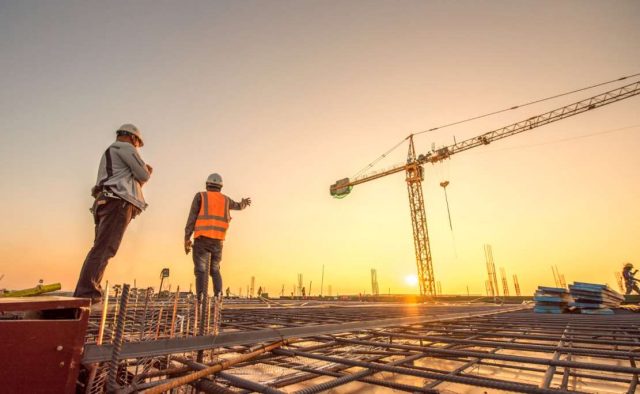There’s no doubt that being a construction worker involves facing risks daily. Your team could be working near a lot of heavy equipment, tools, materials, and vehicles that can all cause serious harm. Not to mention that you may have employees working from heights or be near exposed electrical wires at any given time. You and your team need to recognize the common ways construction workers get hurt and do everything you can to avoid them.
The risks of getting hurt on a construction site are not the same as those working in an office. While it’s certainly not fun to trip and fall in an office setting, chances are you wouldn’t lose your life if it happened. On the other hand, on a construction site, many accidents could kill you. So taking risks is very worth it.
While you can never prevent all accidents from happening, you can limit the risk and lower the probability of it by having the right safety measures in place. That said, if something were to happen, you want to ensure that you have the right insurance coverage to protect you from financial fallout. Make sure that you have workers’ compensation for construction trades so that any employee that’s injured on the job can get compensation for their medical bills, lost wages, utilities, and any other burden they may face as a result of the injury. To get you started on preventing injury, here are some common risks that construction workers face every day.
Working at Heights
Falling from heights is the most common cause of injuries on construction sites. While it is sometimes necessary to work up high, you should do whatever you can to minimize how often it is needed. For example, if something can be assembled on the ground and then placed where it needs to be, then that is a safer option. If working at heights is necessary, then any worker going up there must have the right training. This includes understanding how to work on scaffolding, rooftops, and ladders. You should have a plan and protocol in place for working at heights regarding working in teams and the precautions that every worker has to take.
Material Exposure
Working on a construction site means being exposed to many different materials that can be dangerous to people. Demolition can cause the release of many substances like lead and asbestos, for example. Many older homes or those in disrepair may also have mold. Some materials used for construction can also be toxic. That includes lead-based substances that prevent corrosion on installations and chrome when welding. While exposure to these things will not cause injury, it can cause illness and lead to diseases like cancer. Contaminated dust and mold can also exacerbate respiratory issues.
Slips, Trips, and Falls
There are many tripping and slipping hazards on any project. For example, materials are being used for the project that may be lying near a work area. Tools and equipment are often left on the ground as well. As a result, there can be holes on the ground that can cause trips or sprained ankles. Trailing cables are also a common hazard as they are used for heavier equipment that may be moving around the site. You need to have a comprehensive set of guidelines laid out for your workers to do whatever they can to avoid creating tripping hazards. This includes picking up tools after use, discarding any unused materials, and putting warnings near any holes in the ground or uneven circumstances.
Noise
Construction sites are noisy. Some tools require a lot of power that impact surfaces or slices through them. Jackhammers, power saws, drills, and blasting can all generate very high sound levels. Over time, this can cause deafness. The OSHA states that exposure to 85 decibels or more for 8 hours regularly will cause permanent hearing impairment. However, many of the noises on a construction site can get up to 100 decibels or more. At that level, hearing loss can occur after just an hour. Make sure that everyone on your site wears the appropriate ear protection at all times to cut down on this risk.
Electrocution
Many construction projects involve working around a lot of electricity. You may work near power lines or have an electrician working on the power of the building. You also have heavy equipment that uses a lot of power, and their cables can be damaged, exposing the inside wires. Extension cords can also get worn down over time. Make sure you do not have workers without the proper training working on electrical projects. Hire only certified electricians for the work, and even ask them about electrical safety on each specific project.
Vibration-Related Issues
When powerful equipment is running, it can create a lot of vibrations. If a worker holds a tool or sits in a seat, those vibrations pass from the equipment into the body. Over time, this can lead to a disease known as Hand Arm Vibration Syndrome (HAVS). This condition is permanent, and it affects nerves, joints, and blood vessels. It can be debilitating over time. There is no cure for HAVS, so if it is not prevented, it will hamper someone’s quality of life for as long as they live. Therefore, all of your workers must have vibration protection and should keep their equipment properly maintained.
Burns
There are several ways that a worker could get burned while on the job. For instance, there may be explosives used for demolition. Chemical burns are also a concern, along with arc burns from welding and contact burns from touching hot objects. For the most part, burns can be treated with first aid but cause pain, swelling, and blistering. Serious burns can cause severe injury and death.
While these are the most common, there are plenty of other risks that construction workers face daily. Construction workers are essential for our economy and for our progress, so you must do whatever you can to keep them safe. Keep these and other hazards in mind when planning out a construction project.

Speaks from heart, always too passionate and driven by emotions. Spins the words with kindness & sharpness, intriguing your ever-inscrutable minds.




